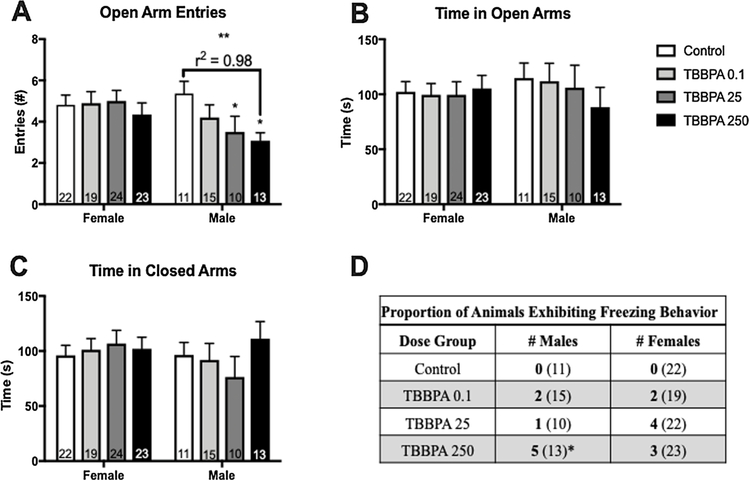Fig. 7.
Effects of developmental TBBPA exposure on elevated plus maze (EPM) behavior in Experiment 2 offspring. No significant sex differences between the control offspring were found for any EPM endpoints. No exposure-related effects were found in female offspring. In males, a significant effect of exposure was found for open arm entries in both the TBBPA 25 and 250 groups (A). A significant linear trend was also observed for open arm entries (A). No significant effect of exposure was observed for time spend in either the open arms (B) or the closed arms (C). The table (D) summarizes freezing behavior differentiated by exposure group and sex. Bolded numbers indicate the number of animals that froze during the first minute of the task, while the numbers in parentheses indicates the total number of animals tested. White bars indicate control groups, light gray TBBPA 0.1, dark gray TBBPA 25, and black TBBPA 250. Graphs depict mean ± SEM (* p ≤ 0.05; ** p ≤ 0.01).

